Diving in PNG… At the closest point of contact just 6km separates Australia from Papua New Guinea. And yet there is so much that is different between these two close neighbours!
Australia is a first-world country with many things that are the admiration of the world. Such as generally excellent health, education and social systems, a robust and fully functional democracy together with an average life expectancy of 83 years.
PNG on the other hand is very much a third-world country. Which has major issues with its health and education systems, an operating but troubled democracy and an average life expectancy of just 64 years.
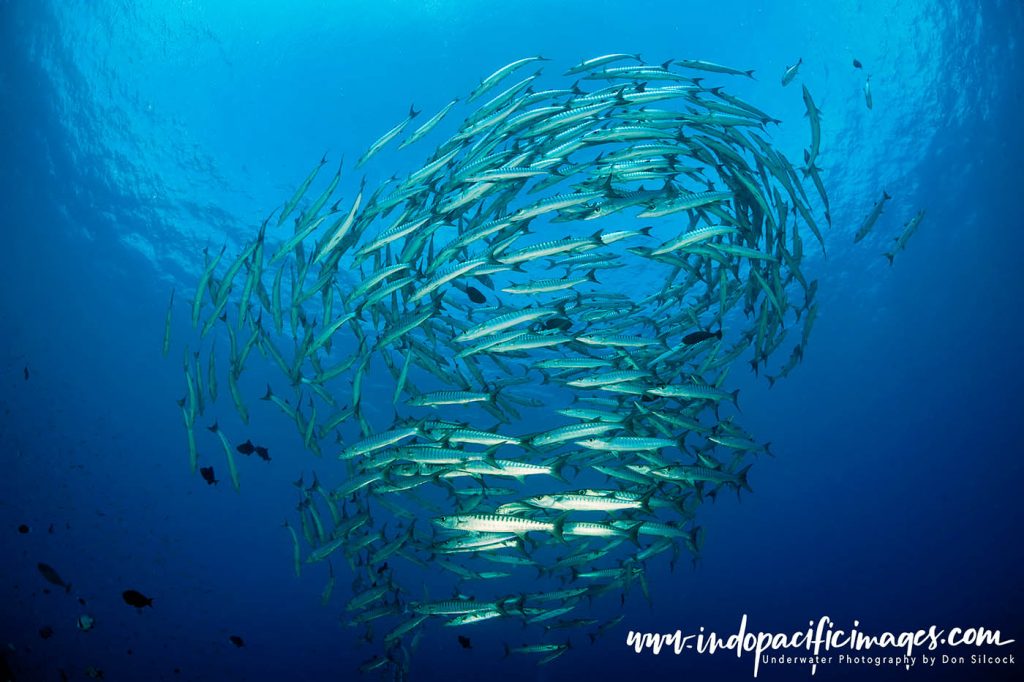
But it has a unique social system that is both a saving grace and the lead in the saddlebags of real progress. Plus, it has to be said… PNG suffers from a terrible reputation from random, violent crime.
So… why would you even bother going there? Well, the answer to that question lays in those very differences plus the amazing topography. The unique cultures and the incredible biodiversity of Papua New Guinea!
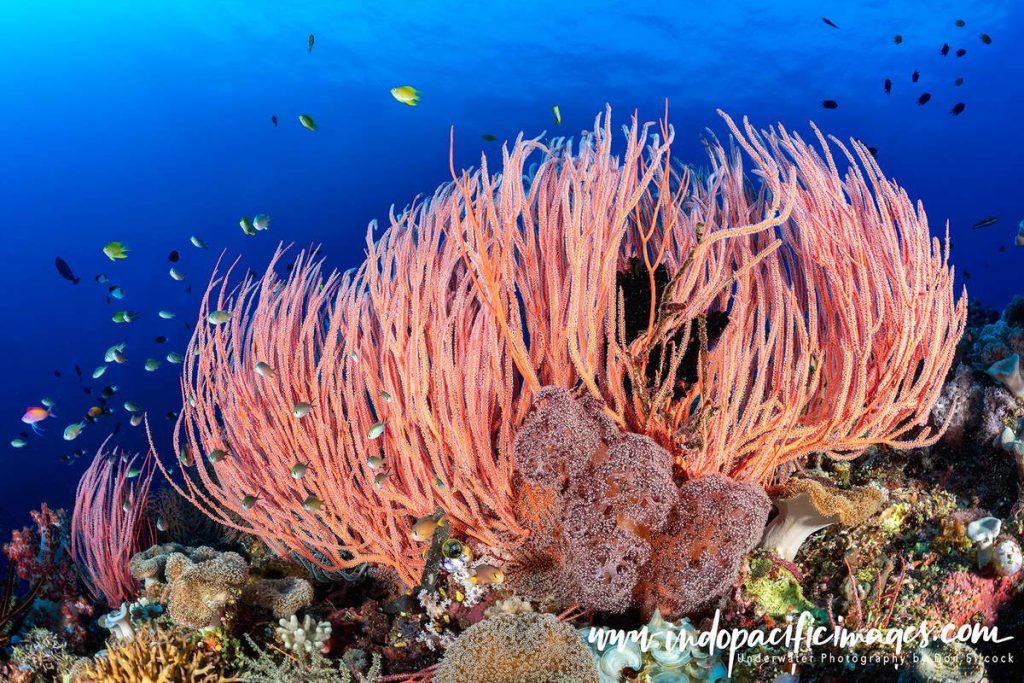
Diving in PNG – A Complex Place…
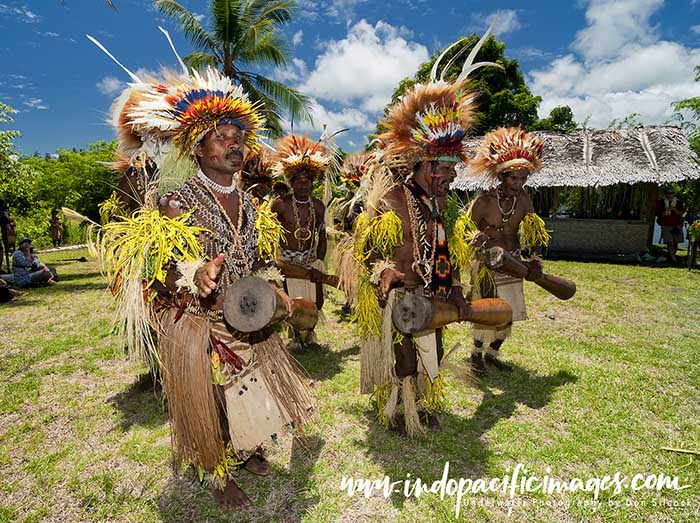
The country that we call Papua New Guinea came in to being in September 1975. When it gained independence from Australia, which had administered the former colonies of British and German New Guinea since the end of WW1.
In retrospect, it was a rushed and flawed transition. One that took it from a colonial administration to a Westminster system of government. And many of the current problems PNG faces can be traced back to it.
The basic issue being the patchwork quilt of tribes and clans that form PNG.
Together with the principle of “Wantok” where a person’s primary loyalty and allegiance is to those who speak the same language or dialect (one talk…).
It’s a complex thing, in what is said to be one of the world’s most heterogeneous countries. PNG has a population of around 7.8m people, but over 850 languages. Together with nearly 1000 traditional societies and ethnic indigenous groups!
With a Great View!
PNG consists of the eastern half of the huge island of New Guinea. Plus, the Bismark and Louisade archipelagos, the Admiralty Islands and Bougainville Island.
Together with numerous other smaller islands in both the Bismarck and Solomon Seas.
Physically it is the world’s 54th largest country and the 3rd largest island country
The country is located on the southern rim of the infamous Pacific Ring of Fire. And it is volcanic activity that has created the amazing topography of PNG.
With massive, almost impenetrable, mountain ranges covered in dense rain forest dominating both New Guinea and New Britain islands.
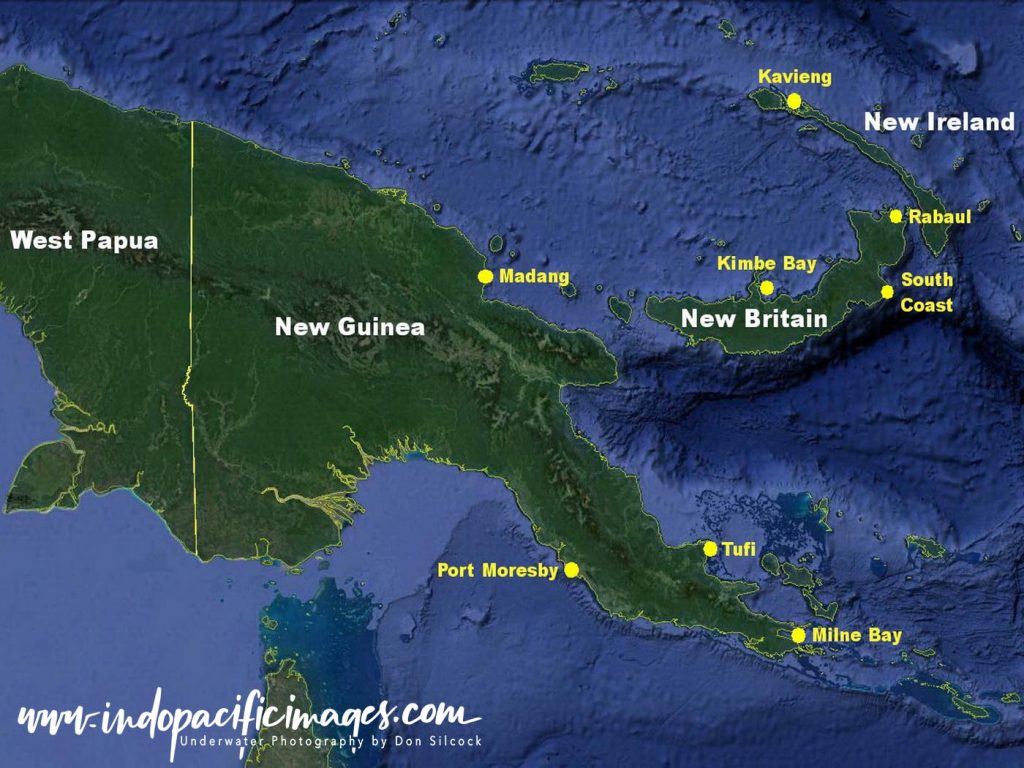
While the coastal areas bask in the rich currents of the Indo-Pacific creating superb reefs and ecosystems. While many of the remoter islands offer stunning locations that are almost once in a lifetime experiences!

“First Contact”
When the first European explorers surveyed New Guinea island (the second largest in the world) in the 16th century. They saw the mountain range that runs down the spine of the island and assumed nobody lived up there.
What they, and all that came after them, did not realise was that the mountains they saw from the south coast were not the same as the ones seen from the north!
In reality there was a large rift valley (which those mountains form the sides of) inhabited by numerous tribes.
Living a village-based subsistence lifestyle and engaged in an ever-shifting series of conflicts.
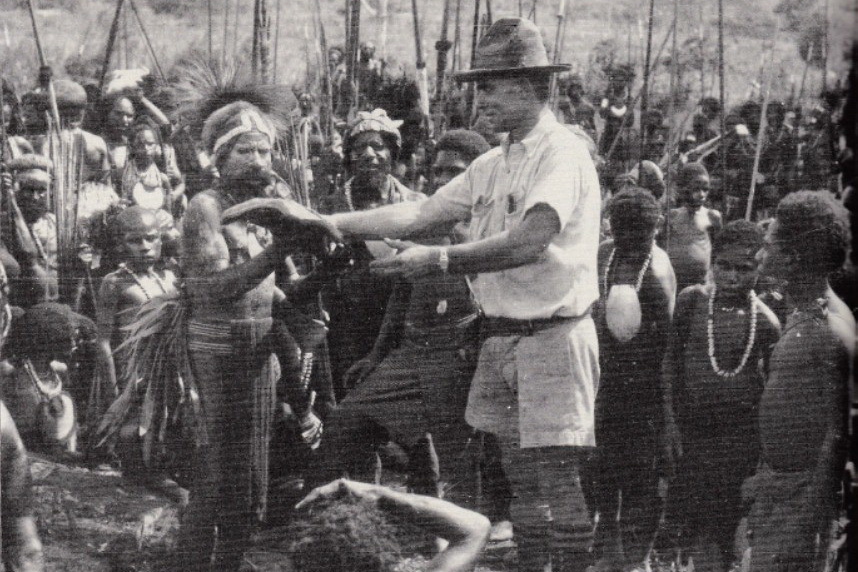
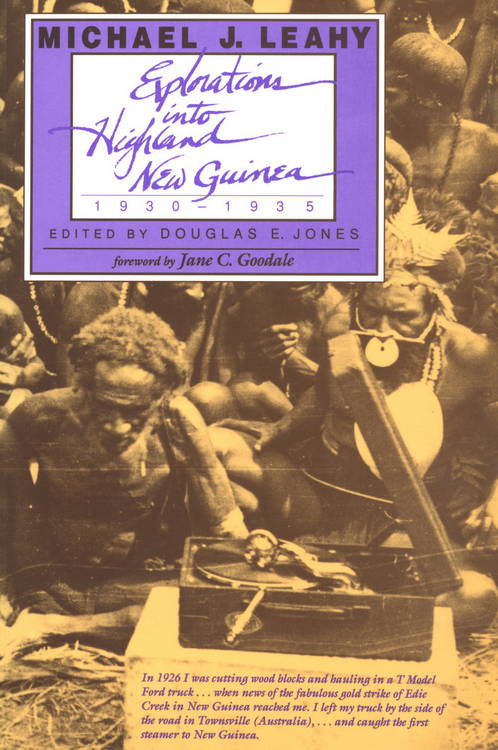
Most of the tribes had their own language or dialect and were largely isolated from each other because of those conflicts.
Incredibly “first contact” with the outside world did not happen until 1932.
When an Australian prospector called Michael Leahy, from rural Queensland, entered the rift valley looking for gold!
Even more incredibly, given the year, Leahy owned a Leica camera and took an extensive series of photographs.
Hence a unique visual record into an amazing series of events was established. And Leahy also fully documented his experiences on the expedition in a daily journal.
Those languages and dialects, together with the long history of inter-tribal conflict, are the basis for the Wantok system…
Diving in PNG – Marine Biodiversity
PNG sits at the very epicentre of the renowned Coral Triangle. Simply stated – the richest known area of marine biodiversity in the world.
Much has been written about the Coral Triangle and the six countries that it covers from eastern Indonesia and Malaysia, Timor Leste, Papua New Guinea, the Philippines and the Solomons.
The “Readers Digest” version is that the incredible biodiversity of the Triangle is a result of the massive flows of water from the Indonesian Throughflow and the Southern Equatorial Current.
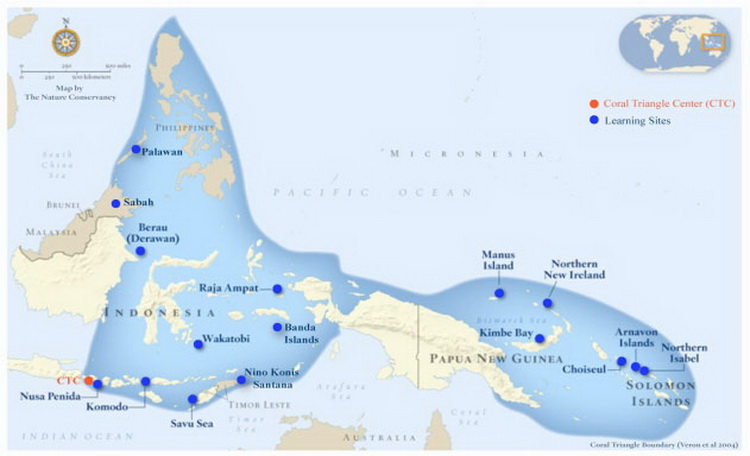
Both of which deliver nutrients from the deep-water basins of the area. And, most importantly, distribute the eggs and larvae of the region’s species. Uniquely, because of its location, Papua New Guinea is touched by both water flows. Which creates uniquely diverse locations that have to be experienced to be fully understood!
Diving Papua New Guinea
There is some tremendous scuba diving in PNG… But in such a large geographical area it makes sense to concentrate on one or two of the main diving locations.
Unless, of course, you have unlimited time and money… In which case you should probably do them all – diving PNG is addictive!
Diving in PNG – New Guinea Island
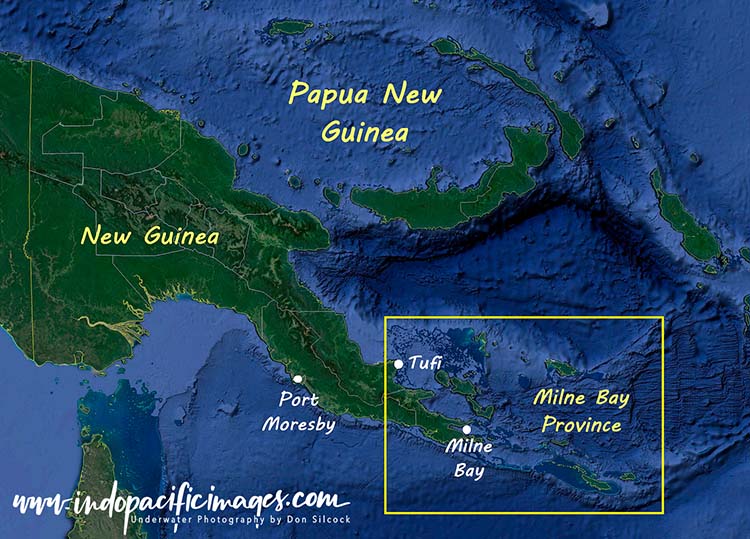
From an overall scuba diving perspective Papua New Guinea can be thought of as three primary areas.
Starting with the main island of New Guinea and the well-known area of Milne Bay, centred around the town of Alotau on the eastern tip of the island. Milne Bay offers excellent diving and phenomenal biodiversity.
There is also surprisingly good diving near the capital Port Moresby on the south coast of New Guinea.
Excellent diving at Tufi on the north-east coast. And finally, there are some really nice sites around Madang, farther up in the north-west.
Diving in PNG – New Britain
Going east into the island provinces is the large crescent-shaped island of New Britain, where the diving on the north coast is centred around Kimbe Bay.
Kimbe is to New Britain what Milne Bay is to New Guinea island…
An incredible location with tremendous diving on the seamounts and reef systems of the bay.
It is also the base for the liveaboards that dive the Fathers Reefs in the remote eastern end of the bay and the Witu Islands in the Bismarck Sea.

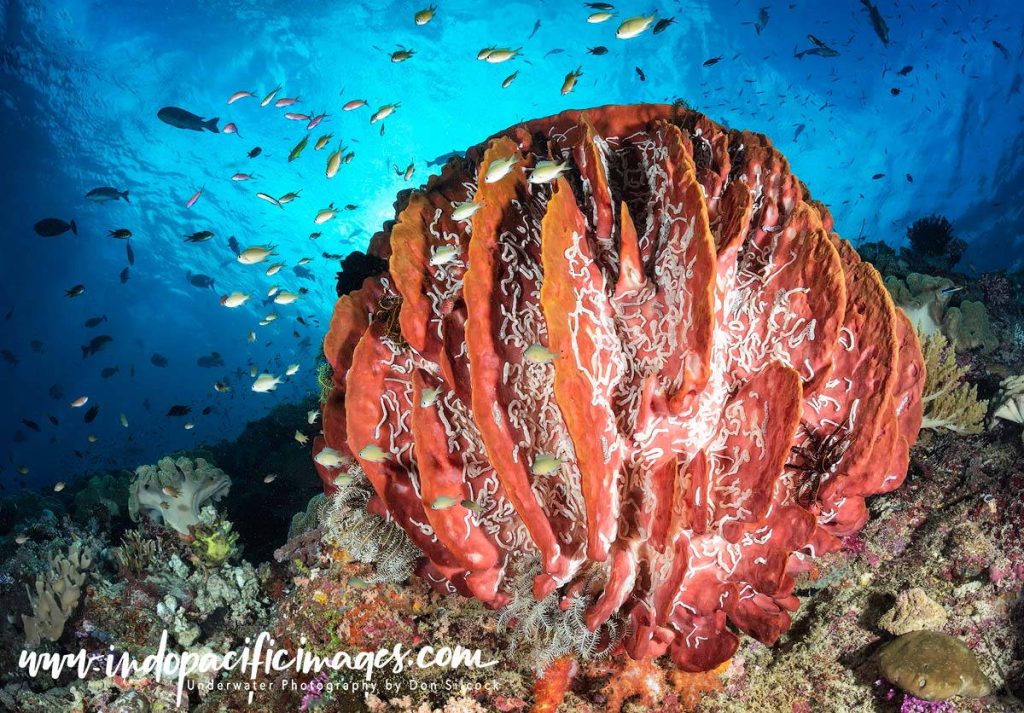
On the north-east tip of New Britain is Rabaul. Famed for its massive caldera and 65 WWII Japanese wrecks now largely buried under volcanic ash after the 1994 eruptions the Tavuvur and Vulcan volcanoes. While most of those wrecks are no longer diveable. A couple are and there are several other really great sites in the Rabaul area.
Finally, there is the remote south coast of New Britain. Which can only be dived a few months of the year but is both truly exceptional and a real adventure!
Diving in PNG – New Ireland
Located along the edge of the Bismarck Archipelago, the province of New Ireland forms the eastern flank of PNG and is quite remote from the main island of New Guinea, with its own distinct and interesting traditional cultures. The province consists of the large, musket-shaped main island of New Ireland. Together with numerous other smaller islands, the largest of which is New Hanover.
Diving in New Ireland is centred around Kavieng, the main town and provincial capital which offers a broad smorgasbord of diving. With shipwrecks, WWII aircraft wrecks, dramatic walls, dynamic channels, bustling reefs and schooling pelagics!
New Hanover also has some excellent diving with a superb mixture of rarely dived reefs. Together with WWII Japanese shipwrecks, including a completely intact midget submarine!
Diving in PNG – Is PNG Safe?
The $64,000 question… Hopefully, you now have a degree of insight in to why Papua New Guinea is such a special and unique place. But is it safe and should you go?
As a self-declared “PNG tragic” that’s a question I get a lot. The honest answer is no it’s not 100% safe and there are areas of Port Moresby where you would have to be crazy to go to!
But stay away from them and I am certain you will be just fine. And once you get to your final diving destination you will be in excellent hands and have no concerns at all.
In total, over a period of 25 years, I have been to PNG 26 times and I can honestly say that in all those journeys I have never once had a real scare.
In Summary…
I also get asked a lot why I am so fascinated by PNG. And the answer to that one is the place is just so different and quite unlike anywhere else I have been to.
The history, the tribal cultures, the people, the topography, the marine biodiversity and the incredible diving are an amazing combination. Plus, which other major diving destination can you leave from the east coast of Australia in the morning, transit through Port Moresby and be at your resort or liveaboard that same evening?
Yes, it has its issues but that’s actually part of the excitement of going there. And after all – hey it’s Papua New Guinea, expect the unexpected!
Diving in PNG – Scuba Diver Article
The Australian edition of Scuba Diver magazine recently published a five page article of mine on Diving in PNG – an Intro to an Amazing Country. You can use the link to download a PDF copy of the article.
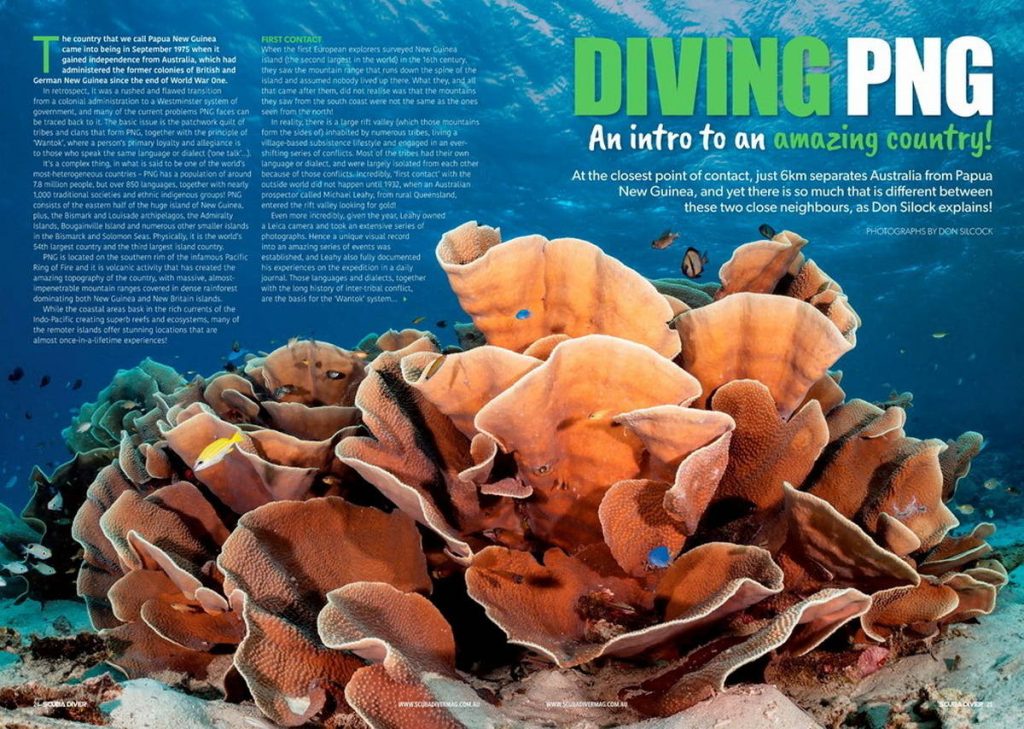
Back To: The Complete Guide to Diving Papua New Guinea
